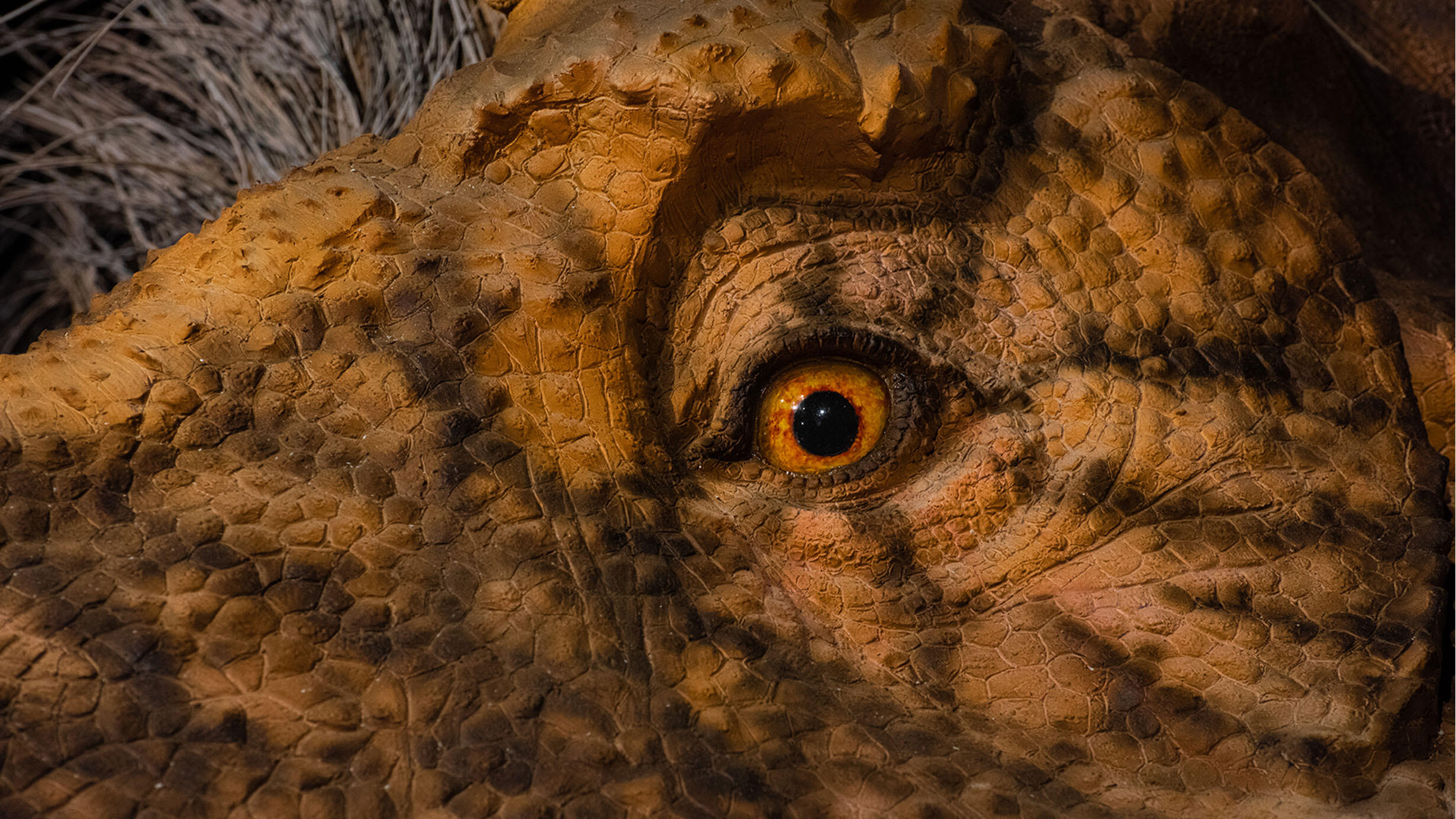 T. rex had large wide-set eyes, which scientists think allowed it to have exceptional depth perception and to see long distances.
T. rex had large wide-set eyes, which scientists think allowed it to have exceptional depth perception and to see long distances. D. Finnin/© AMNH
Apart from its famously tiny arms, everything about an adult Tyrannosaurus rex was big.
It weighed 6 to 9 tons and stood about 12 to 13 feet high at the hip, measuring up to 43 feet long. With foot-long teeth and a nearly 5-foot-long skull, T. rex also had the biggest bite of any known living animal—chomping down with a bite force of 7,800 pounds, or the weight of three cars.
Fossil evidence shows that some of its sensory organs and processing centers were super-sized, too—giving this hunter exceptional abilities to track its prey.
Superior Sight
An adult T. rex had eyes the size of oranges—the largest of any land animal. As is common in predators, including raptors like hawks and eagles, the eyes of T. rex faced forward. They were also set wide apart, giving T. rex excellent depth perception to aid in pursuit of prey. The eyes were set relatively high on the head, boosting this dinosaur’s ability to see longer distances.
Find out why birds of prey have such superior eyesight.
And since birds and crocodiles—the closest living relatives of tyrannosaurs—can see ultraviolet light in addition to the colors seen by humans, scientists think it’s likely that T. rex could see an expanded spectrum of color. Predators with this ability could be more effective at tracking their prey through the thick camouflage of a dense forest.
Mapping the Brain
D. Finnin/© AMNH
Analyzing a T. rex brain requires the right fossil specimens and specialized techniques. By splitting fossilized skulls, scientists have created endocasts, or models, from the hollow cavity inside the skull to determine the shape of the T. rex brain. CT scanning has also been used to make digital representations of brain cases.
Find out what other traits made T. rex the ultimate predator.
Looking to living animals, scientists have mapped the brains of tyrannosaurs’ closest to figure out which regions are responsible for various sensory processing and compare similar regions in the brain of T. rex. One interesting finding: T. rex brains show unusually large olfactory regions for a dinosaur, indicating the species had an exceptionally keen sense of smell.
Learn more about Tyrannosaur rex senses in the special exhibition T. rex: The Ultimate Predator.